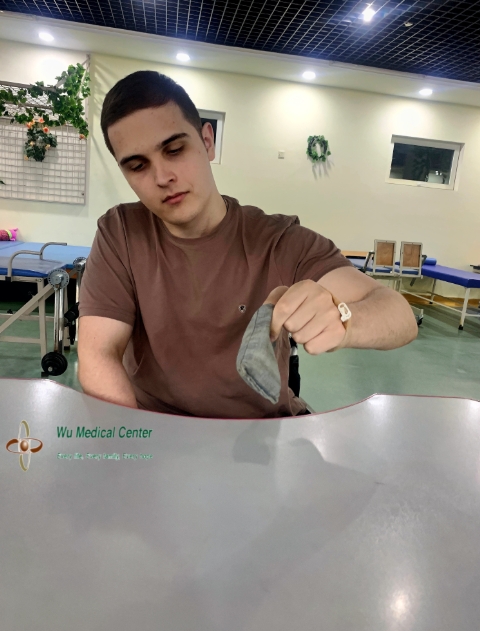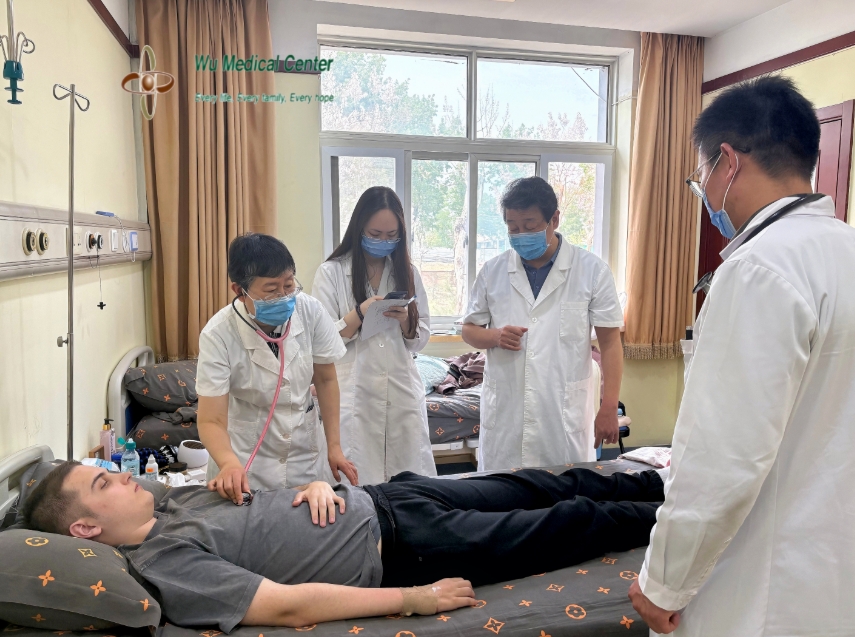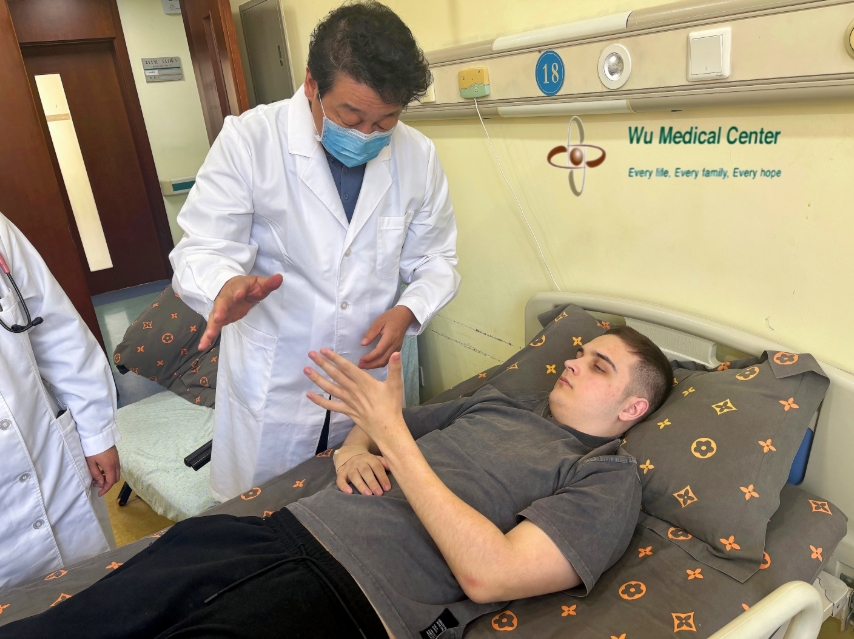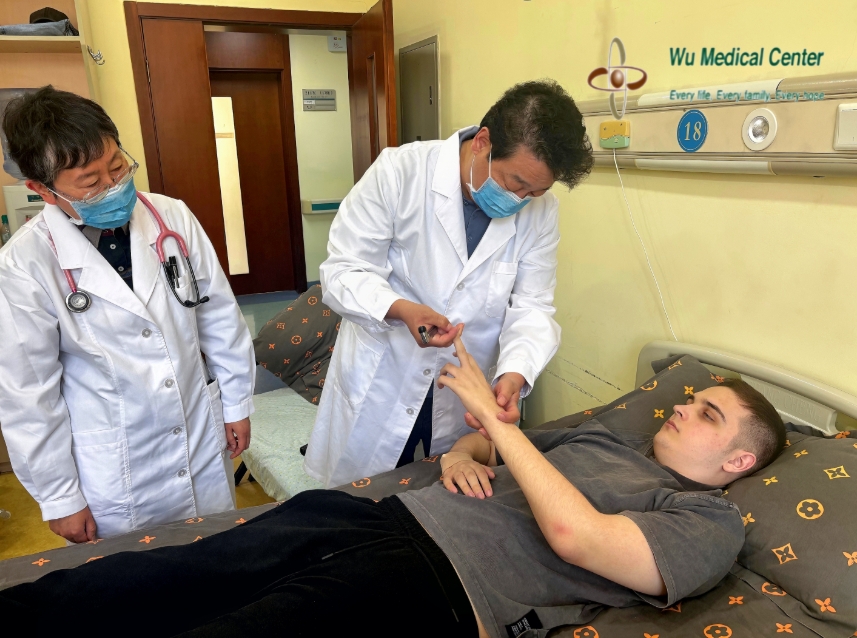Danil Izumov-Sequelae of spinal cord injury-(Belarusian)
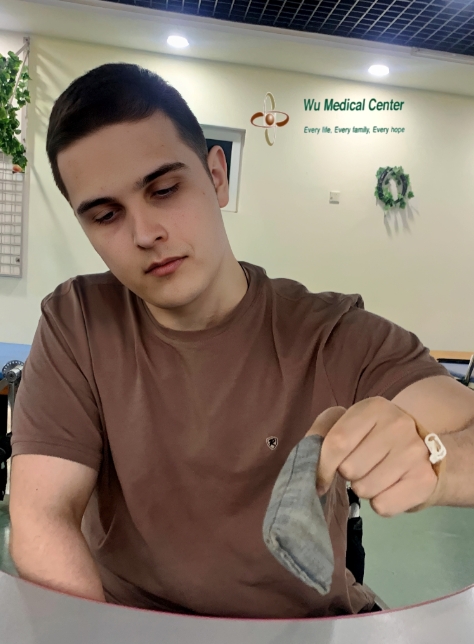 Patient Name: Danil Izumov
Patient Name: Danil Izumov
Gender: Male
Age: 20 years old
Nationality: Belarusian
Diagnosis: Sequelae of spinal cord injury
Before Treatment:
The patient was admitted with the chief complaint of "motor in the limbs and sensory disorders for 4 years following cervical spine injury," diagnosed as "sequelae of spinal cord injury."
Admission Examination:
The patient's blood pressure was 120/70 mmHg, heart rate 45-50 beats per minute, and respiratory rate 20 breaths per minute. He was well-nourished, with clear breath sounds in both lungs and no rales. Heart sounds were strong, with occasional irregularities, and no murmurs in the valve areas. His abdomen was soft, with no enlargement of the liver or spleen. There was no edema in both lower limbs.
Neurological Examination:
The patient was alert, spoke fluently, and exhibited normal memory and calculation abilities. Cranial nerve examination showed no abnormalities. His neck was supple, with fair strength in neck rotation and shoulder shrug. His left upper arm muscle strength was grade 4, forearm muscle strength was grade 3, wrist strength was grade 3, and grip strength was grade 2. His right upper arm muscle strength was grade 3+, forearm strength was grade 3; wrist strength was grade 2, and grip strength was grade 0. Muscle strength in his lumbar and back region was grade 3-, while both lower limbs had a muscle strength of grade 0. Muscle tone in both of his upper limbs was generally normal, while there was significant hypertonia in both of his lower limbs. Mild atrophy was noted in the hypothenar and interosseous muscles of both of his hands, as well as in the muscles of both legs. Tendon reflexes in both of his upper limbs were essentially normal, while those in both of his lower limbs were hyperactive with clonus. The abdominal reflexes were normal for the upper wall, while the middle and lower wall reflexes were absent. Superficial and deep sensations were absent below the T12 segments bilaterally. The Babinski sign was positive bilaterally. In the finger-to-nose test, he could slowly touch his left index and middle fingers, but not the others; he could not perform the test with his right hand. Meningeal signs were negative.
Treatment Process:
The patient was clearly diagnosed with "sequelae of spinal cord injury" upon admission. He received treatment with neural stem cells and mesenchymal stem cells for spinal cord nerve repair, supplemented with CAST therapy to improve circulation, nourish the nerves, and modulate the immune response, along with comprehensive rehabilitation treatment.
After Treatment:
Post-treatment, the patient shows improvement in motor function and increased muscle strength. His left upper arm muscle strength is grade 5-, forearm strength is grade 4, wrist strength is grade 3+, and grip strength is grade 3, allowing him to grasp a cup and drink water by his left hand. His right upper arm muscle strength is grade 4+, forearm strength is grade 4; wrist strength is grade 3, and grip strength is grade 2. Muscle strength in his lumbar and back region is grade 3+, while both of his lower limbs has muscle strength of grade 2-. He is able to perform the finger-to-nose test with his left hand, showing improved finger dexterity; his right hand demonstrates initial finger movement capability. Both of his lower limbs can maintain a supported position with hip and knee flexion, and he can control adduction and abduction movements. Reflexes in the middle and lower abdominal wall on both sides can also be elicited. Clonus in both lower limbs is significantly reduced. Overall muscle volume is increased, and his energy and physical stamina improves markedly.
